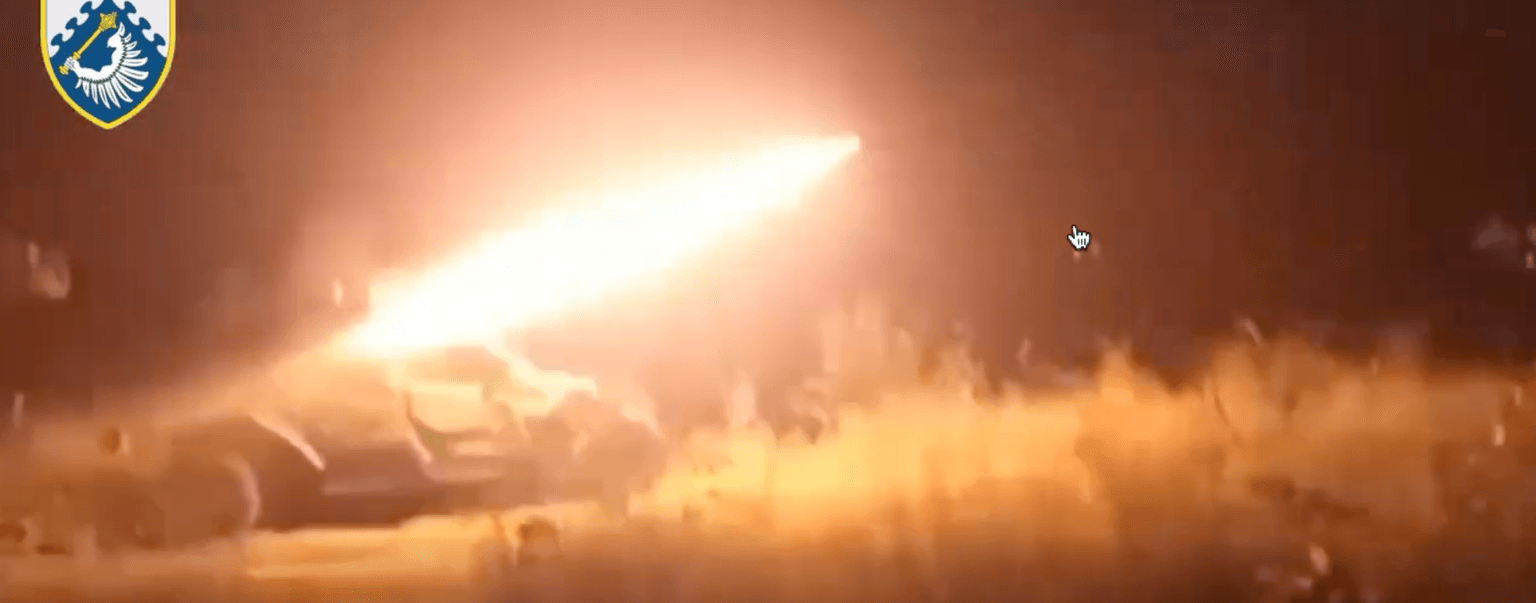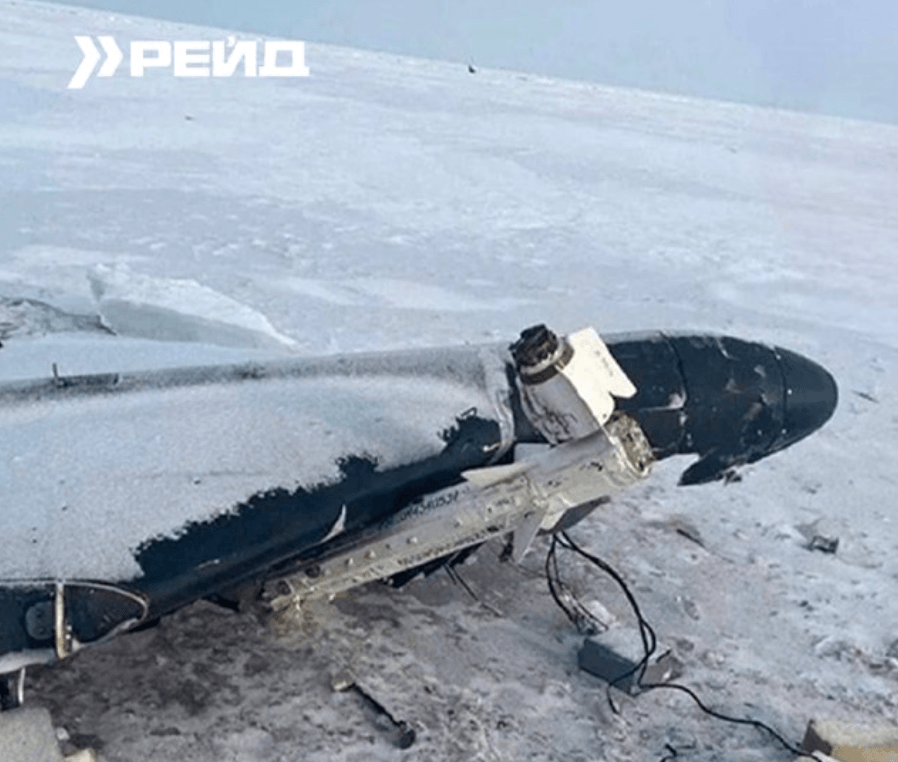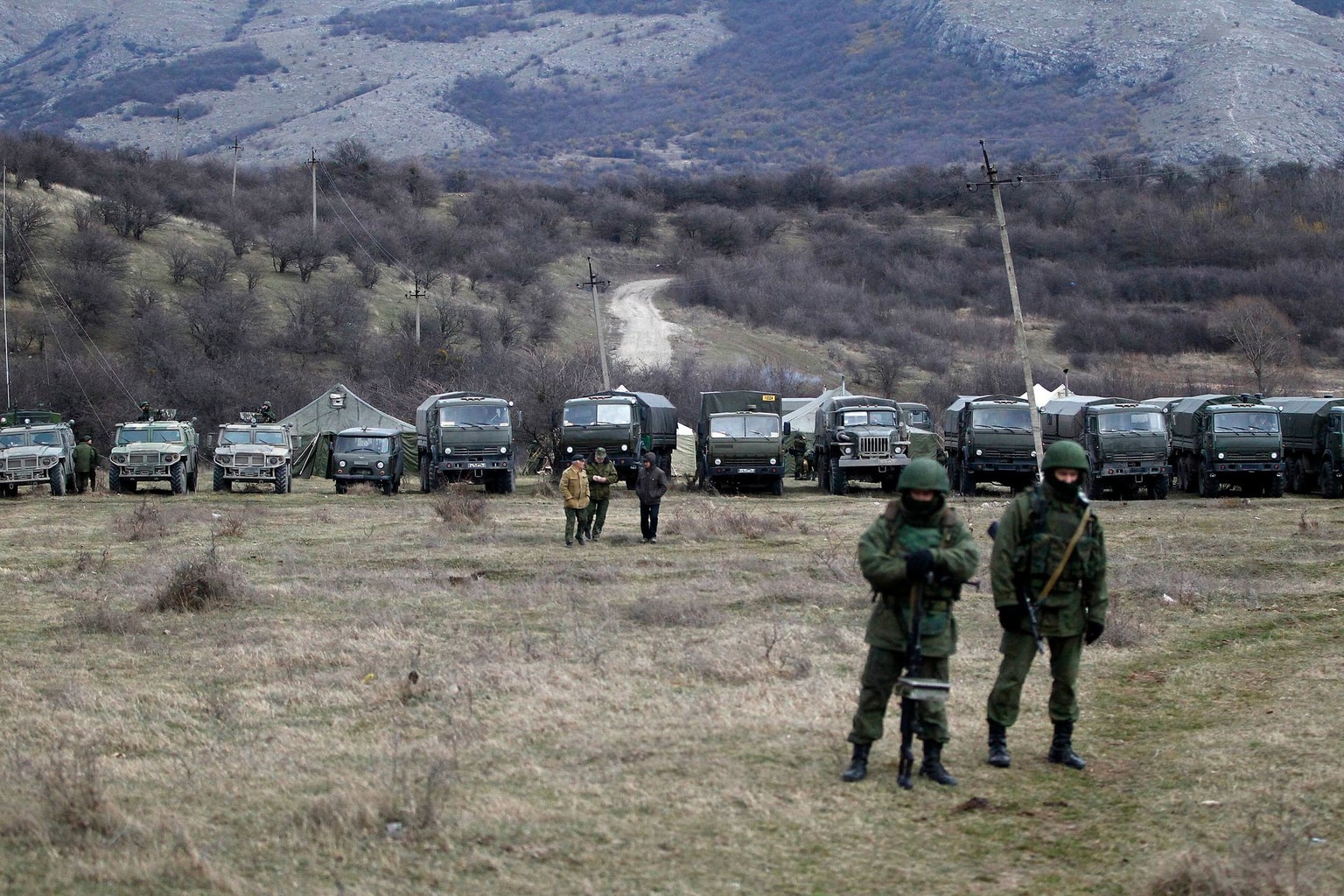
‘We took out so many of them:’ Ukraine stabilizes Kharkiv front after brutal Russian offensive
After making quick early gains across Ukraine’s northern border, Russia’s May offensive on Kharkiv Oblast has run out of steam.
Soldiers of an assault brigade defend the front line, which passes through the Ukrainian border city of Vovchansk, Kharkiv Oblast, which is heavily bombarded daily, on May 20, 2024. (Kostiantyn Liberov/Libkos/Getty Images)
Editor’s note: In accordance with the security protocols of the Ukrainian military, soldiers featured in this story are identified by first names and callsigns only.
KHARKIV OBLAST – In battles fought under a sky swarming with enemy drones, even the most minimal movement, even the quickest dash from one house to another, is more often spotted than not.
“Look, you can see three of them, those black figures moving down the street,” says Nazar, “Artist,” a softly-spoken young artillery commander from Ukraine’s 42nd Mechanized Brigade.
The livestream, fed from a Ukrainian reconnaissance drone to an online feed of all the aerial vision in the battalion’s sector, jitters and cuts out briefly, but what is depicted on the screen is clear enough.
The Russian soldiers skirt quickly along a line of fences on the main street of an empty village.
This is the visual cue that Artist’s crew has been waiting for; that basement was already known to be host to several Russian soldiers.


“When it is just one or two infantrymen on the move, there is no point shooting at them,” the 21-year-old commander said to the Kyiv Independent.
“But when a group like that enters a basement or dugout then we get to work.”
On their commander’s word, the team of five artillerymen spring into action, sprinting the short distance between the dugout and the 122mm Soviet-era Gvozdika howitzer.
The weapon is already well-concealed by the thick May foliage of the forest, but another net needs to be first pushed aside: a more recent innovation, designed to protect against attacks from Russia’s Lancet loitering munitions.
Three take their positions inside the great metal machine, while the other two work to prepare shells and charges.
The howitzer lurches violently with each shot, spitting out balls of flame from the muzzle that singe the nearby bushes.
Artist watches everything from the bunker.
A total of eight shells are fired, some landing very close to the basement, setting the neighboring house on fire, though the decades-old gun doesn’t manage a direct hit.
“They are definitely feeling it in there,” Artist said.
This is the once-peaceful village of Starytsia in Kharkiv Oblast: little more than a single street of houses nestled in a shallow valley between gently rolling forested slopes.
Occupied by Russian forces without much fighting at the start of the full-scale invasion and liberated six months later in September 2022, Starytsia hasn’t yet been flattened systematically, as is the case with many front-line villages in Donetsk Oblast, where fighting has raged for months or years.
With the village now straddling the front line of Russia’s new offensive on Kharkiv Oblast, the destruction is coming thick and fast.
Beginning on May 10, Moscow’s long-anticipated opening of this new front in the north was met with fear and concern in Ukraine, especially in the city of Kharkiv itself, which came under threat of once again being in range of Russian artillery.
Kyiv responded swiftly though, with a handful of battle-hardened Ukrainian brigades and top drone units sent to reinforce the region, on top of those, like the 42nd, which had been moved to Kharkiv Oblast a few weeks earlier in anticipation of such an attack.
After making rapid initial gains, the offensive soon began to run out of steam.
As of May 30, Russian forces continue to control a handful of settlements on two separate axes, one near the town of Vovchansk and the other towards the village of Lyptsi, where they have advanced a maximum of just 10 kilometers from the state border.
According to open source mapping, little to no further gains have been noticeable in the past week; on May 24, Ukraine’s General Staff announced that Ukrainian forces had already begun counterattacking operations in the area.
“It has already stabilized,” said Artist.
“We stopped the enemy, they are not going any further, now we will push them back to the border.”
In a charming summer house further west, a three-man Ukrainian FPV (first-person view) drone team also looks for Russian movements in the rolling fields north of Kharkiv.
This unit, belonging to the Khartiia Brigade of Ukraine’s National Guard, has been fighting in this sector, near the village of Lyptsi, since being redeployed here from Donetsk Oblast a few days after the offensive started.
Well-known for its emphasis on incorporating technology and NATO standards into its workflow, Khartiia is also based in Kharkiv Oblast.
As drones in the Ukrainian military are often bought with volunteer-crowdfunded money, the tools and training available to the pilots, navigators, and technicians depend a lot on a unit and their resources.

This team is well equipped: on some days, they fly up to 20 suicide drone missions per day, said 23-year-old drone pilot Vladyslav “Kara” to the Kyiv Independent.
“They are mostly moving with infantry, they understand that using armored vehicles isn't effective in the area.”
The ease with which Russian infantry groups seemed to initially cross the border and advance into Kharkiv Oblast caused a stir in Ukrainian society, at odds as it was with the idea that the command had long prepared for such an attack.
Particular scrutiny was placed on the apparent failure of Ukrainian fortifications along the border in Kharkiv Oblast, the defenses of which had been singled out for praise by President Volodymyr Zelensky.
Scanning the screen on Artist’s tablet in the artillery dugout, rows of “dragon’s teeth” anti-tank obstacles and roughly dug trench systems are clearly visible.
These, as he admits to quietly, are positions that had been overrun by Russian forces in the first days of the offensive.
“We are not idiots and they are not either, there is this wide gray zone on the border where there is no chance to dig in,” he added. “They entered that gray zone and we met them.”

Kara, who hails from the town of Derhachi — north of Kharkiv and itself just 22 kilometers from the border — is a lot less forgiving.
“They were telling us that everything was defended, in reality, it wasn't at all. When we fly around these fields, we can see exactly how things were built,” he said.
“A proper dugout should not be visible, it should be hidden as best as possible, and these are just out in the open, saying to the enemy, 'look, here we are!'”
Mid-sentence, Kara is interrupted by the radio, which notifies his team of a Russian car spotted next to a treeline about 10 kilometers away.
“Shrapnel or incendiary?” he asks.
Upon the answer of “incendiary,” a large plastic bottle, essentially a Molotov cocktail for a drone, is mounted with zip ties to the FPV airframe.
While Kara dons his goggles, not one but two drones are launched: the FPV for hitting the target and the retranslator: a DJI Mavic equipped with a powerful antenna that enables the FPV to fly much further.
The journey towards the target takes about seven minutes, but once they get close, the video signal begins to break up dramatically, as Russian electronic warfare assets in the area are turned on.
With an expert touch on the remote, Kara rises and circles, still searching for an angle of approach even while flying almost blind.
Even so, it isn’t enough: the battery dies before Kara can attempt a diving attack. A second attempt meets a similar fate.
“Their EW is very strong in this area,” said Kara with a tone of pure acceptance.
“Especially here after lunch, they have clearly turned it on, and we seem to always get stuck on it.”

The initial stabilization of the front line in Kharkiv Oblast came as a relief to residents who were under the threat of a second Russian occupation.
But in the big picture, while Moscow may have hoped for more gains, it achieved its goal to up the overall pressure on Kyiv and force them to pull units away from the other sectors.
“I think they wanted to draw as many forces as possible here, and then start something in another direction, maybe in Donetsk Oblast,” said Artist, whose brigade was moved to Kharkiv Oblast from Chasiv Yar, which remains a major hotspot.
As Russian advances slowed in the rolling fields defended by Ukrainian units including the 42nd and Khartiia, focus shifted to the urban fight in Vovchansk, a town just five kilometers from the border.
Here, Moscow was able to concentrate its firepower, most notoriously its air-dropped gliding bombs, to a devastating effect, razing the town almost completely to the ground in just a few weeks of fighting.
Under cover of bombardment, Russian infantry groups, made up of a mix of contract soldiers, paratroopers, and even Chechen Akhmat fighters, assaulted the city one ruined building at a time, said Andrii “Khotabych,” a reconnaissance soldier of the 82nd Air Assault Brigade, which was transferred to Vovchansk from Zaporizhzhia Oblast, where it had played a key role in the Ukrainian summer counteroffensive.
“They are everywhere, they are like ants,” said Khotabych, 39.
“It's very tough, the level of destruction is crazy, I didn't see this intensity of shelling and fighting in Bakhmut.”
Khotabych’s team travels in and out of the city on missions lasting several days, using both drones and old-school boots-on-the-ground reconnaissance tactics, twice coming into close-quarters firefights with Russian forces.
“We took out so many of them, all their equipment is burning,” he said.
According to Khotabych, Russian forces had, at one point, taken over two thirds of Vovchansk’s urban area, but had now been pushed back across the Vovcha River into the northern suburbs of the town.

Control over Vovchansk remains contested, and although Ukrainian forces are holding firm with time, Russia’s brutal tactics do still threaten to pose a challenge for the overstretched defending units.
“The toughest thing is the way you just get exhausted after a while. They just keep coming and coming,” said Khotabyvch.
“We don't have enough people, and even the strongest person just runs out of strength after a while; both physically and mentally.”
Two days after speaking to the Kyiv Independent, Khotabych and his reconnaissance team were targeted by Russian FPV drones in Vovchansk. One of the group was killed, while Khotabych and another soldier received multiple shrapnel wounds. His condition is stable.
Note from the author:
Hi, this is Francis Farrell, cheers for reading this article. I hope that news about Russia making gains across the front line hasn't come as a surprise to you. Things are moving fast, and not in the direction we would like, but whatever happens, we are dedicated to continue being Ukraine's voice to the world, no matter how dangerous and dark this war gets. Please consider supporting our reporting.



















